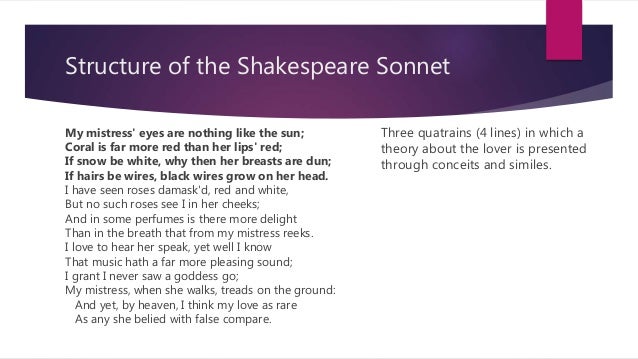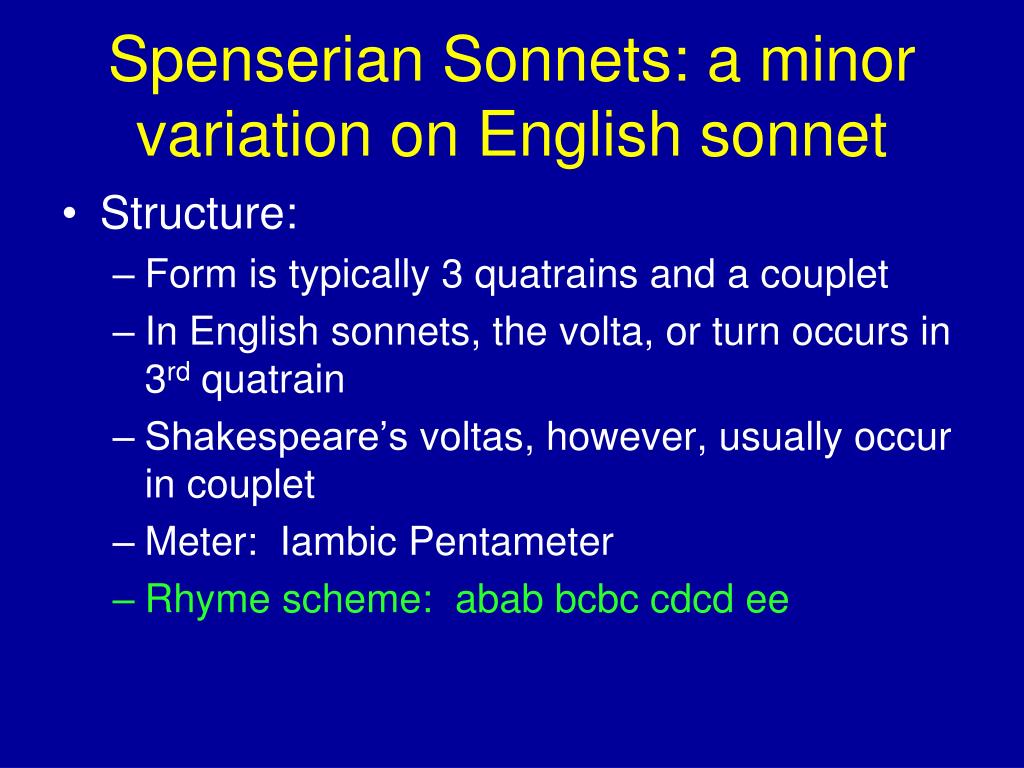

The rhyme scheme of the English sonnet is abab cdcd efef gg. In the course of adapting the Italian form to a language less rich in rhymes, the Elizabethans gradually arrived at the distinctive English sonnet, which is composed of three quatrains, each having an independent rhyme scheme, and is ended with a rhymed couplet. The new forms precipitated the great Elizabethan flowering of lyric poetry, and the period marks the peak of the sonnet’s English popularity. The sonnet was introduced to England, along with other Italian verse forms, by Sir Thomas Wyatt and Henry Howard, earl of Surrey, in the 16th century. In most cases the form was adapted to the staple metre of the language-e.g., the alexandrine (12-syllable iambic line) in France and iambic pentameter in English. It soon became naturalized in Spain, Portugal, and France and was introduced to Poland, whence it spread to other Slavic literatures. The Petrarchan sonnet became a major influence on European poetry. The rhyme scheme of the sestet varies it may be cdecde, cdccdc, or cdedce.


The last six lines, the sestet, resolve the problem, answer the question, or relieve the tension. The first eight lines, the octave, state a problem, ask a question, or express an emotional tension. The Petrarchan sonnet characteristically treats its theme in two parts. If roses are red and violets blue, in poetry, what does the word "foot" refer to? Take your knowledge beyond red roses and blue violets in this quiz spanning famous poems, poets, and the mechanics of poetry. The other major form is the English (or Shakespearean) sonnet. His Canzoniere-a sequence of poems including 317 sonnets, addressed to his idealized beloved, Laura-established and perfected the Petrarchan (or Italian) sonnet, which remains one of the two principal sonnet forms, as well as the one most widely used. From there it spread to Tuscany, where it reached its highest expression in the 14th century in the poems of Petrarch. The form seems to have originated in the 13th century among the Sicilian school of court poets, who were influenced by the love poetry of Provençal troubadours. The sonnet is unique among poetic forms in Western literature in that it has retained its appeal for major poets for five centuries. Sonnet, fixed verse form of Italian origin consisting of 14 lines that are typically five-foot iambics rhyming according to a prescribed scheme. Learn about the love poetry written by Vittoria Colonna, Gaspara Stampa, and Lady Mary Wroth during the Renaissance See all videos for this article SpaceNext50 Britannica presents SpaceNext50, From the race to the Moon to space stewardship, we explore a wide range of subjects that feed our curiosity about space!.Learn about the major environmental problems facing our planet and what can be done about them! Saving Earth Britannica Presents Earth’s To-Do List for the 21st Century.Britannica Beyond We’ve created a new place where questions are at the center of learning.100 Women Britannica celebrates the centennial of the Nineteenth Amendment, highlighting suffragists and history-making politicians.
Shakespeare sonnet structure how to#
COVID-19 Portal While this global health crisis continues to evolve, it can be useful to look to past pandemics to better understand how to respond today.Student Portal Britannica is the ultimate student resource for key school subjects like history, government, literature, and more.This Time in History In these videos, find out what happened this month (or any month!) in history.#WTFact Videos In #WTFact Britannica shares some of the most bizarre facts we can find.



 0 kommentar(er)
0 kommentar(er)
